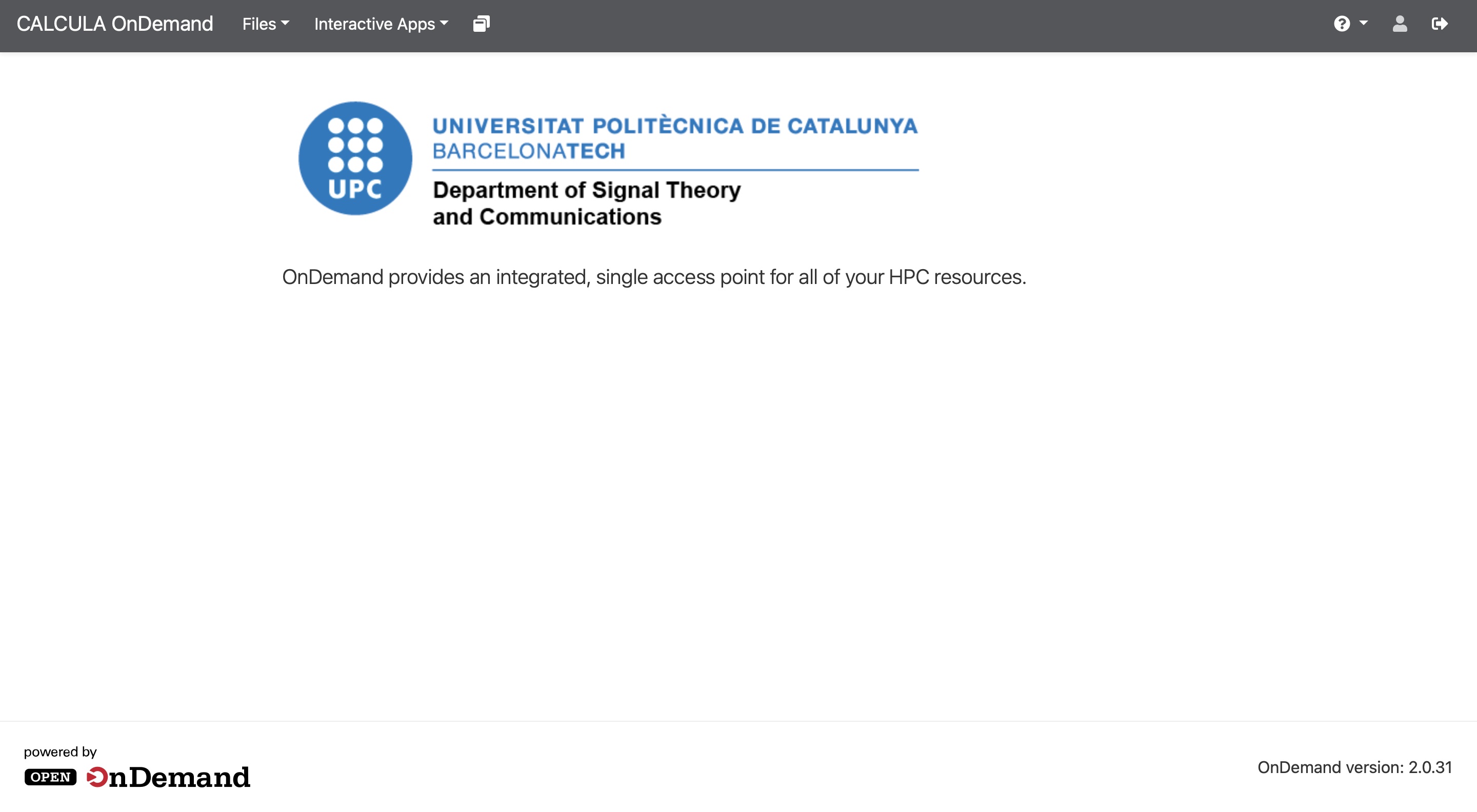SUNSET - Optical Communications
Access services
The first thing you have to do in this landing is to connect to the Sunset servers.
The basic information to connect to our servers is:
- Server / Host: calcula.tsc.upc.edu
- SSH Port: 2226
- Credentials (user/pass): Use your TSC credentials.
You have two main ways to connect to our server: Terminal only or with OnDemand.
Terminal (SSH)
Secure Shell or SSH is a network protocol that allows data to be exchanged using a secure channel between two networked devices. SSH was designed as a replacement for Telnet and other insecure remote shells, which send information, notably passwords, in plaintext, rendering them susceptible to packet analysis. The encryption used by SSH is intended to provide confidentiality and integrity of data over an unsecured network, such as the Internet.
Linux and Mac use to have a ssh-client out-of-the-box. Just open a Terminal application and type the following command replacing username by your actual username:
>> ssh -p2226 username@calcula.tsc.upc.edu
If you are at the UPC or you have a really good internet connection you can use X11-Forwarding by:
>> ssh -X -p2226 username@calcula.tsc.upc.edu
If your laptop is Windows, then the recommended option is to install Mobaxterm as a terminal, open a local terminal and type the above commands. Here you have a basic tutorial for Mobaxterm. For downloading or uploading files to the server, you can use FileZilla on Windows, Linux and macOS. Here you haver a basic tutorial for FileZilla.
Storage services
We have a network storage service:
-
/home/usuaris/sunset/$user:
- Contents: users' home data: code, documents...
OnDemand
This option will be replacing guacamole. OnDemand is a web-based interface for HPC clusters that allows users to access and manage resources through a web browser. It provides a user-friendly way to submit and monitor jobs, access cluster information, and interact with HPC resources without needing command-line expertise.
Connection to OnDemand
First, you need to connect to the TSC department's VPN, and then OnDemand's website: https://ondemand.tsc.upc.edu. Once there, you will see this:

If you click on files > Home Directory you will be able to see all of your files, so you won't need to use filezilla or any other similar softwares.
Moving on, if you go to Interactive Apps > SUNSET Desktop, OnDemand will create a specific and isolated
development environment for you. You should see the following window:

This page allows you to configure your environment based on the specifications of cores, memory and time you require.
Once configured, by clicking on launch you will see this page:

Here you can configure the compression and image quality parameters based on your needs: If you have a bad internet connection, for example, you can increase the compression, so you will get less bandwidth but also less quality of image. If, on the other hand, you see the server is very occupied, you could lower the compression or the image quality.
The View Only option on the right is designed to allow people to view what you are executing.
Now, by clicking on Launch SUNSET Desktop (blue button) you can actually get to your environment. There, by clicking on Applications you have different options. If for example you open the terminal and type in matlab (see image below) you will be able to run matlab on your envirnoment, and execute everything you need in there:

Please note that this is a shared platform, and you will be consuming common resources every moment you are executing, so if you have already finished your work we beg you to go to the OnDemand page (the one that has the Lauch SUNSET Desktop and View Only options) and click on the red button DELETE. Also, remember to only ask for the time you need when configurating your desktop.
Moreover, if you get the message srun: error: task: Killed, it is probably because your app is using more RAM that you reserved. Just ask for more RAM, or try to reduce the amount of RAM that you need.
Opening Ansys Lumerical
If you're looking forward to working with Ansys Lumerical, first Open a new terminal by going to Menu > LXTerminal. Here is where we will write the instructions and commands to open Lumerical. After each command in the LXTerminal (not in Lumerical) you write, always press ENTER to submit it.
After this step is done, we are finally ready to launch Lumerical. Simply type it on the command line and it will open automatically:
>> lumerical &
Share: